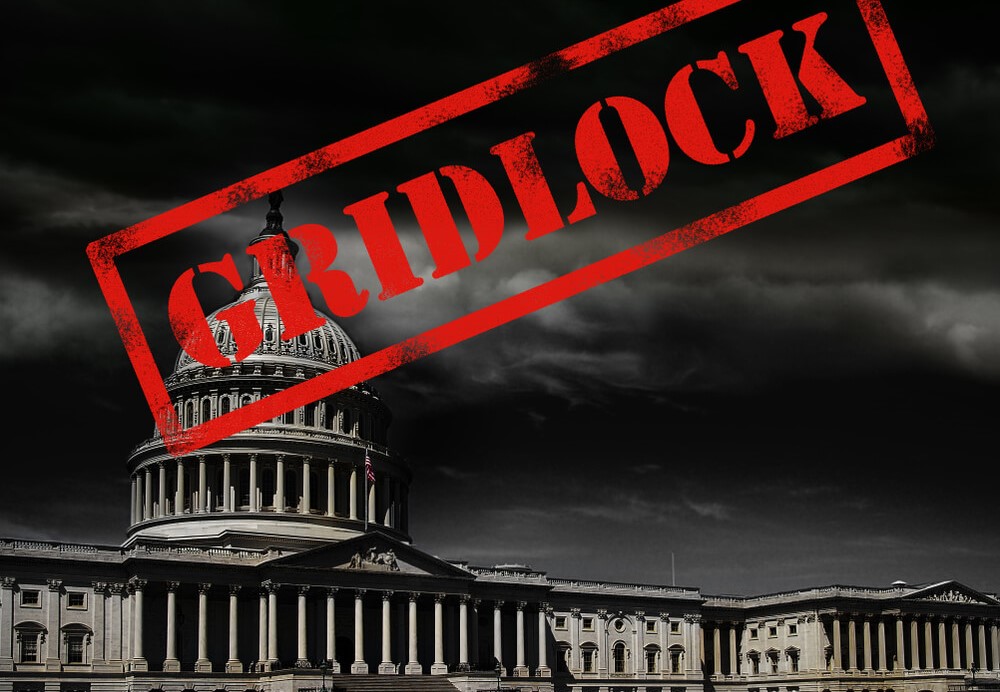President Donald Trump has promised an economic boom that will last at least another decade, but only if he gets help from Congress in passing new legislation — which is unlikely as long as Democrats control the House — according to Trump’s economic team.
The White House’s Council of Economic Advisers on Tuesday forecast the economy will expand at a brisk 3.2 percent this year and a still-healthy 2.8 percent a decade from now.
But the team admitted it will need a major infrastructure bill, even more tax cuts, additional deregulation and new policies that get more people off government assistance and into full-time jobs.
But with Nancy Pelosi, D-Calif., and Democrats holding the House, few if any of those things seem possible at this point.
“Washington is a really hard place to get things done,” said Kevin Hassett, chairman of the Council of Economic Advisers, but he stressed that his biggest concern for growth was Trump’s policies getting rolled back or Medicare for All becoming reality.
The 2019 Economic Report of the President showed for the first time that the White House is predicting much weaker growth if Trump’s new policies don’t come to fruition. According to White House calculations, growth would be about 2.5 percent in 2022 if no additional policies were implemented, and fall to 2 percent by 2026.
A lot is riding on whether Trump can achieve his promised 3% growth. Without it, his tax cuts will add substantially more to the debt than they already have, and Democrats would have an easier time hammering his economic track record.
To achieve the higher growth rate, the White House assumes that the individual tax cuts will be made permanent (they’re currently slated to expire after 2025) and that Congress will pass an infrastructure bill “commencing in 2019 with observable effects beginning in 2020,” the report says. Although there’s widespread agreement that the United States needs a major infrastructure upgrade, there’s a big gap between the Democratic and Republican visions of what to do.
The report calls it a “key downside risk” to the forecast if Congress doesn’t pass the rest of the president’s agenda.
The 3% White House growth prediction — which is used in the president’s budget and has been criticized by outside experts as a “gimmick” — also assumes more deregulation, especially in the finance industry, and a push for “improving self-sufficiency” by placing more work requirements on recipients of government aid. Some of those initiatives might be possible to implement through executive action.
Trump is relying on a strong economy to drive his reelection campaign. He often takes a victory lap about his economic achievements on Twitter and at rallies, touting stock market gains, record-low unemployment numbers and a “booming economy.”
Trump repeatedly called the Obama economy, which averaged just over 2% growth per year, mediocre, so Trump wants to be able to say he has presided over faster economic growth.
Many economists have described the Trump economy as a sugar high. They have predicted that growth will spike after the president’s passage of a large tax cut and driving up government spending, and that growth will return to about 2% by 2020 — or that the economy could tumble into a recession.
The White House has pushed back against the naysayers, arguing that the economy has exceeded expectations since Trump took office and shows little sign of slowing.
“For the second consecutive year, economic growth has either matched or surpassed my Administration’s forecast, and the economy has growth at a 3.1% rate over the last four quarters,” Trump wrote in the report.
Forecasting where the economy is headed is notoriously difficult, but Hassett and his team said that their predictions were almost spot-on the last two years and that they thought many on Wall Street were underestimating the Trump White House again.
“Everyone said we wouldn’t get 3.1%,” Hassett said. “We’re relying on the same analysis because nothing has come up which suggests to us it’s not going to happen.”
Hassett says the corporate tax cut, which was the largest in U.S. history, is spurring a business investment boom that will lift the economy for years to come. But others disagree.
“We’ve not seen any meaningful pickup” in business spending “because of the tax package,” former Federal Reserve Chair Janet Yellen, who headed the Council of Economic Advisers under President Clinton, said in a recent interview with Marketplace. “We had a period of remarkable growth in 2018, probably around 3%. That just isn’t sustainable.”
